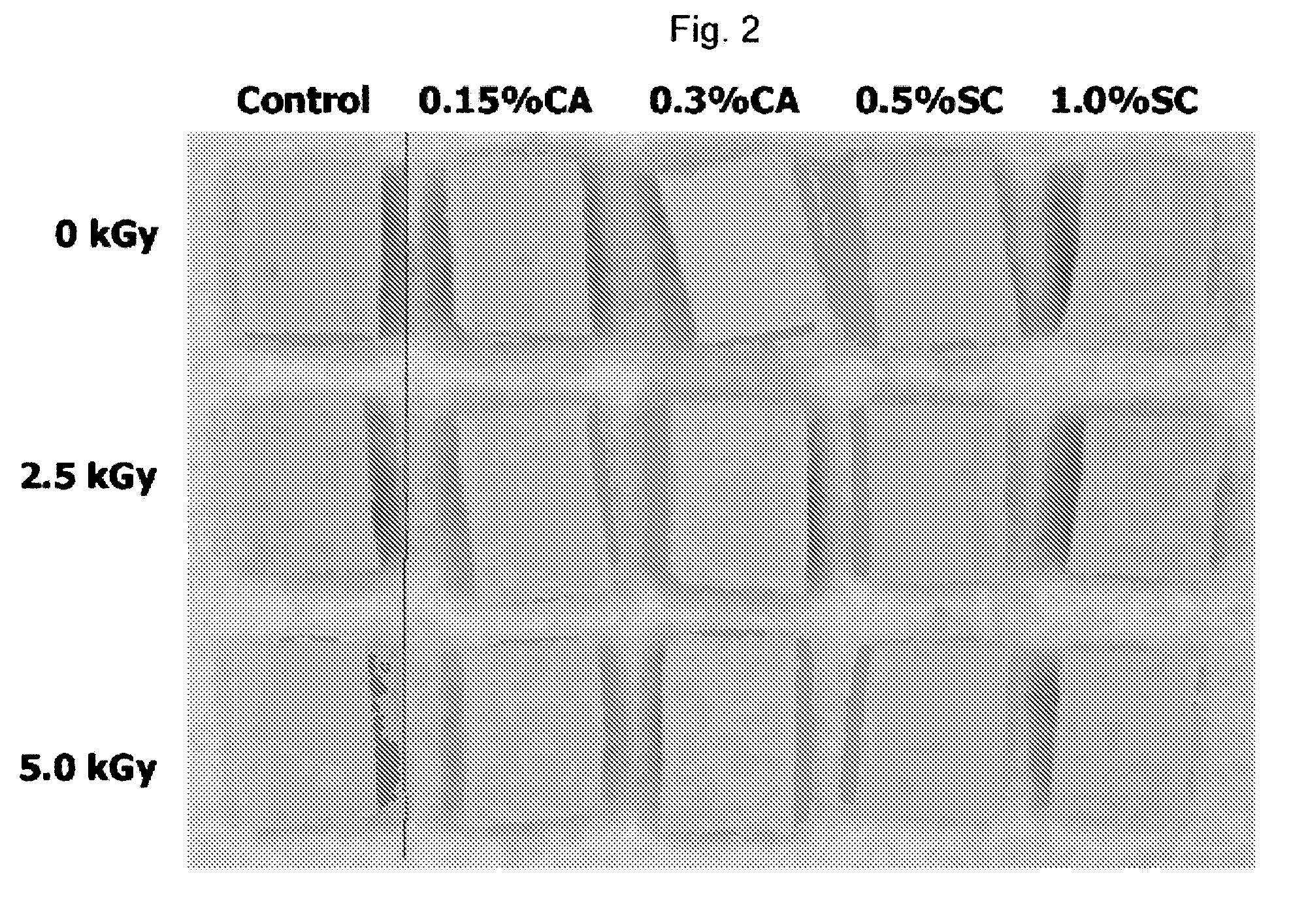Method to reduce pink color in light colored, cooked, uncured meats
a technology of light colored and uncured meats, applied in the field of meat processing, can solve the problems of high level of undenatured pigments, product rejection or discounting, undesirable color defects, etc., and achieve the effect of reducing pink color and pink color
- Summary
- Abstract
- Description
- Claims
- Application Information
AI Technical Summary
Benefits of technology
Problems solved by technology
Method used
Image
Examples
example i
[0032] Identifying Constituents of Whey Protein Concentrates that Reduce the Pink Color Defect in Cooked Ground Turkey
[0033] Whey protein concentrate constituents were tested for their ability to reduce naturally occurring pink color defect and pink cooked color induced by sodium nitrite (10 ppm) and nicotinamide (1.0%) in ground turkey. β-lactoglobulin (1.8%), α-lactalbumin (0.8%), bovine serum albumin (0.15-0.3%), lactose (1.0-3.0%), potassium chloride (500-1500 ppm), and ferrous iron chloride (0.3-30 ppm) had no effects on cooked pink color. Lactoferrin (30-5000 ppm) increased or decreased pink color depending on its concentration in samples without added sodium nitrite or nicotinamide. Annatto (0.1-1.0 ppm) reduced pink color whereas the higher concentration of magnesium chloride (22-88 ppm) and ferric iron chloride (0.3-30 ppm) increased pink color in samples with added nicotinamide. Calcium chloride (160-480 ppm) was the only tested constituent that consistently reduced pink ...
example ii
[0066] Calcium Chloride and Tricalcium Phosphate Effects on the Pink Color Defect in Cooked Ground and Intact Turkey Breast
[0067] Calcium chloride (250, 500 ppm) was examined for its ability to reduce the pink color defect induced by sodium nitrite (10 ppm) and nicotinamide (1.0%) in cooked ground turkey in the presence and absence of sodium tripolyphosphate (0.25, 0.5%) and sodium citrate (0.5, 1.0%). The ability of tricalcium phosphate (0.1-0.5%) to reduce pink cooked color also was evaluated in ground turkey and both calcium chloride and tricalcium phosphate were tested for their effects on pink cooked color in whole breast muscle. The combination of calcium chloride and sodium tripolyphosphate, not calcium chloride alone, was necessary for a reduction in pink cooked color induced by nicotinamide. Subsequently, in the presence of phosphate, both calcium chloride and sodium citrate reduced pink cooked color and were most effective in combination. Tricalcium phosphate also was cap...
example iii
[0093] Effects of Calcium Chloride Injection into Intact Turkey on the Pink Color Defect.
[0094] Background
[0095] Effects of injecting calcium chloride into intact turkey breasts were evaluated. Initial research (discussed above) indicated that calcium chloride did not have a positive effect on controlling the pink color defect in intact turkey. However, this research was limited because the intact turkey was injected using a hypodermic syringe. Such injection is not indicative of commercial processing practices. Accordingly, the effect of injecting calcium chloride into intact turkey breasts was re-evaluated using a commercial pickle injector.
[0096] Materials and Methods
[0097] Fresh turkey was obtained from Oscar Mayer. The turkey breasts were formulated to contain 2% NaCl and 0.5% STP. To achieve these ingredient levels the turkey was injected (multineedle commercial injection system) at 30% pump. One treatment was formulated without CaCl2 (None) and another treatment was formu...
PUM
 Login to View More
Login to View More Abstract
Description
Claims
Application Information
 Login to View More
Login to View More - R&D
- Intellectual Property
- Life Sciences
- Materials
- Tech Scout
- Unparalleled Data Quality
- Higher Quality Content
- 60% Fewer Hallucinations
Browse by: Latest US Patents, China's latest patents, Technical Efficacy Thesaurus, Application Domain, Technology Topic, Popular Technical Reports.
© 2025 PatSnap. All rights reserved.Legal|Privacy policy|Modern Slavery Act Transparency Statement|Sitemap|About US| Contact US: help@patsnap.com



